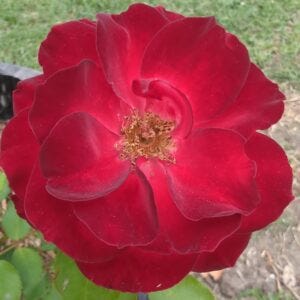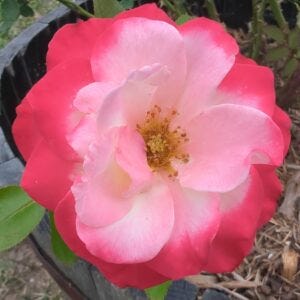Sunday Salutations and a Happy Easter!
Today, we are going to take a trip down the lane of science and roses. I talked once before about rose colors and why I like multitone roses so much, in my fragile uniqueness post. Today we will look at the heat sensitive nature of coloration because I find heat sensitive pigmentation fascinating.
And I have some beautiful color examples! The crazy temperature changes this week in Houston made this post both timely and possible. These examples truly highlight the amazing variety, beauty, and resilience of nature.
Just to give a reference of Houston temperature changes, the nights have been “cold” by Houston standards, but more like the spring you see in Washington, with cool nighttime and morning temperatures in the 50s or low 60s. This weekend, we have been back to more normal Houston temperatures with mid 60s in the morning and 80s in afternoon.
Now, why does this matter? Because cold changes the colors, man!
And wow! Does it!
Let me show you a few examples.
Notice how bright pink (or even red) the edges of the Paradise Rose are in the colder temperatures? In the warmer temperatures, the rose is mostly pink, with just a hint of red, and even then the pink is lighter.
1. Temperature mid 50s at night, low 70s during the day (cold Paradise Rose)
2. Temperature mid 60s at night, 80s during the day (warm Paradise Rose)
Next, we have a red-white rose. This one is incredible with just how much and how deeply the red is in the cold. In the cold, we have basically a dark almost completely red flower. And in the warmth, a white flower with red and pink edges. On the sample plant. At the same time. Yep, that is all from temperature changes during the rose development/blooming (over the course of 1 week).
1. Temperature mid 50s at night, low 70s during the day (cold red-white)
2. Temperature mid 60s at night, 80s during the day (warm red-white)
Now, if you are like me. Your first question is how?
Rose pigmentation changes based on the temperature. Usually, this means that the same plant when it blooms in colder months will produce darker colors. Apparently, it is related to the levels of anthocyanins within the petals and how anthocyanin biosynthesis is regulated.
What is anthocyanin? It is the water-soluble pigmentation that provides pink, purple, and red in roses and many other flowers.
One interesting dichotomy is that sunlight increases anthocyanin levels, but heat reduces them. This means that a good weather cold snap in Houston, with our normally strong sunlight, will produce the darkest colors of my purple roses I am likely to get. However, the bushes aren’t that old, and the PH of the soil can also alter the color, so who knows how dark they really could be?
But, being trained in genetics, I am interested in the molecular biology, of course. If you are too, drop me a line and I’ll share with you.
Still, if you aren’t interested in the science behind the colors, just enjoy how as small as a 10-degree (Fahrenheit) temperature change can complete change the colors of a rose. It is almost like magic.
Hope everyone has a wonderful Easter and that you noticed the magic of science around you in everyday life.
Anna and Tod






